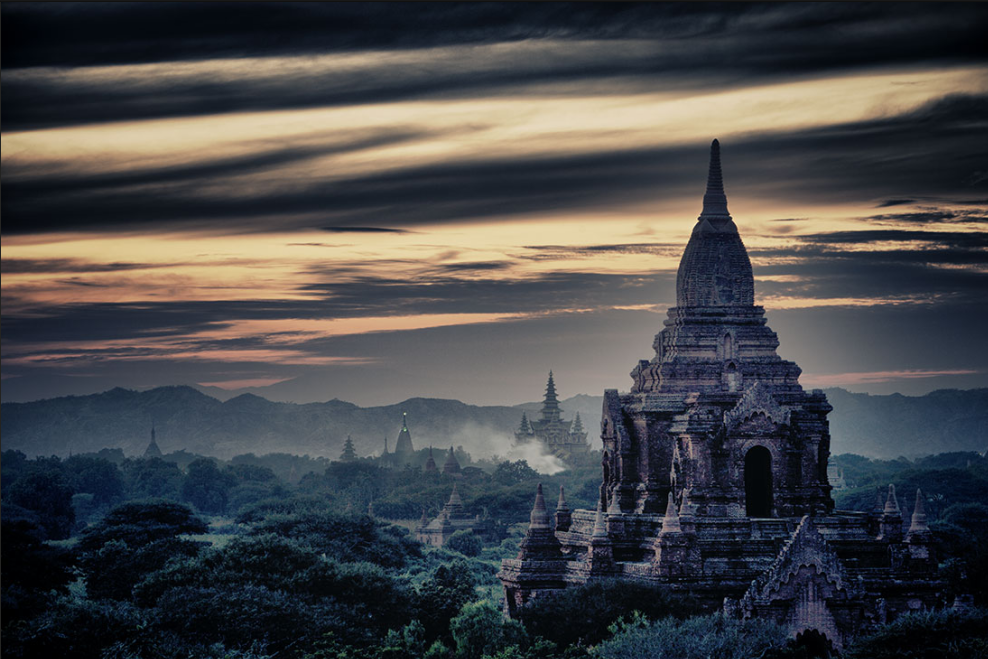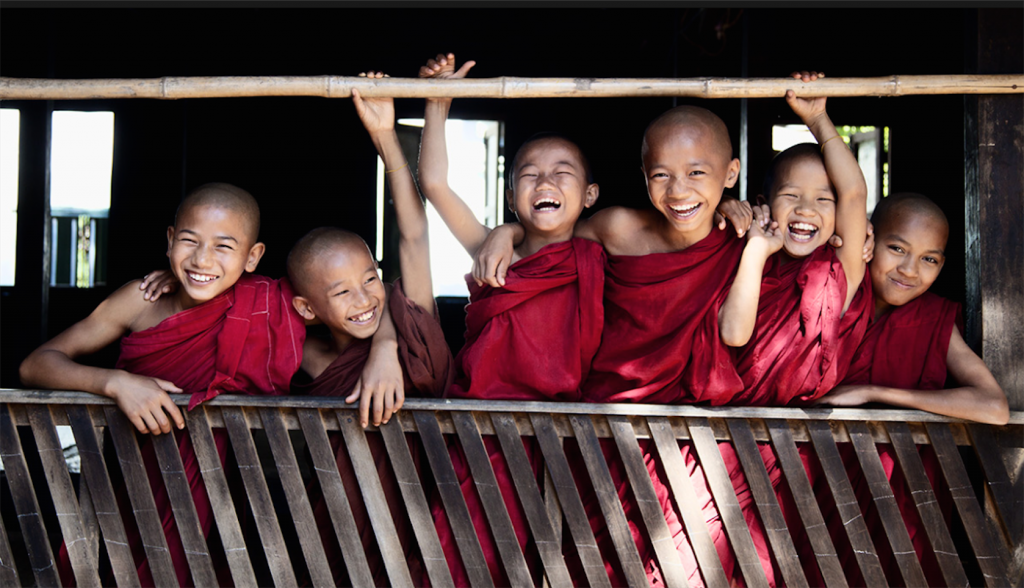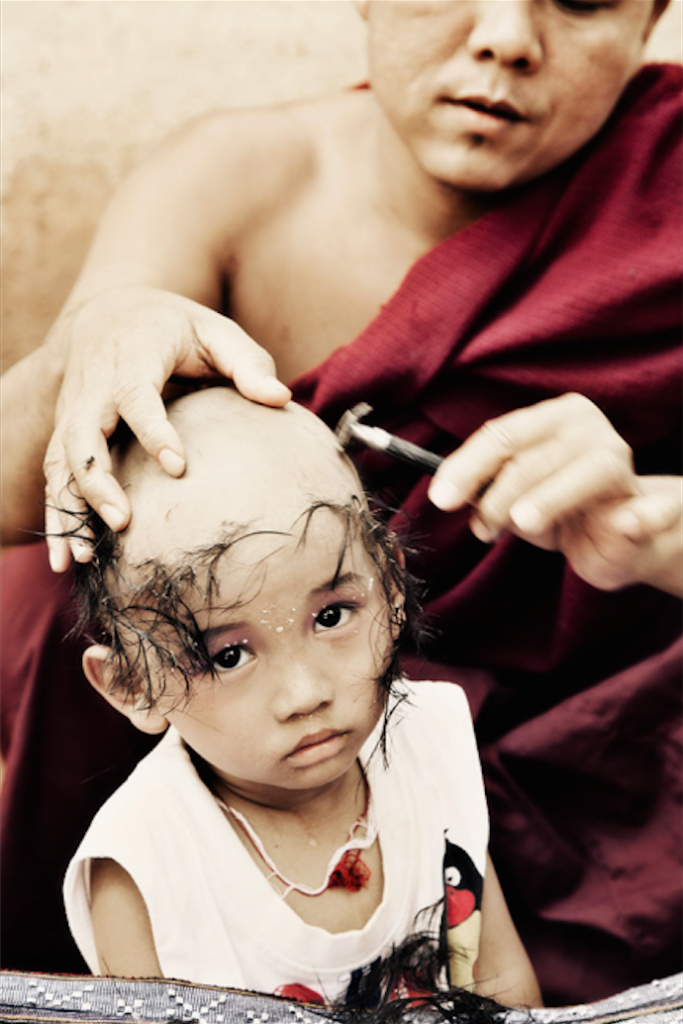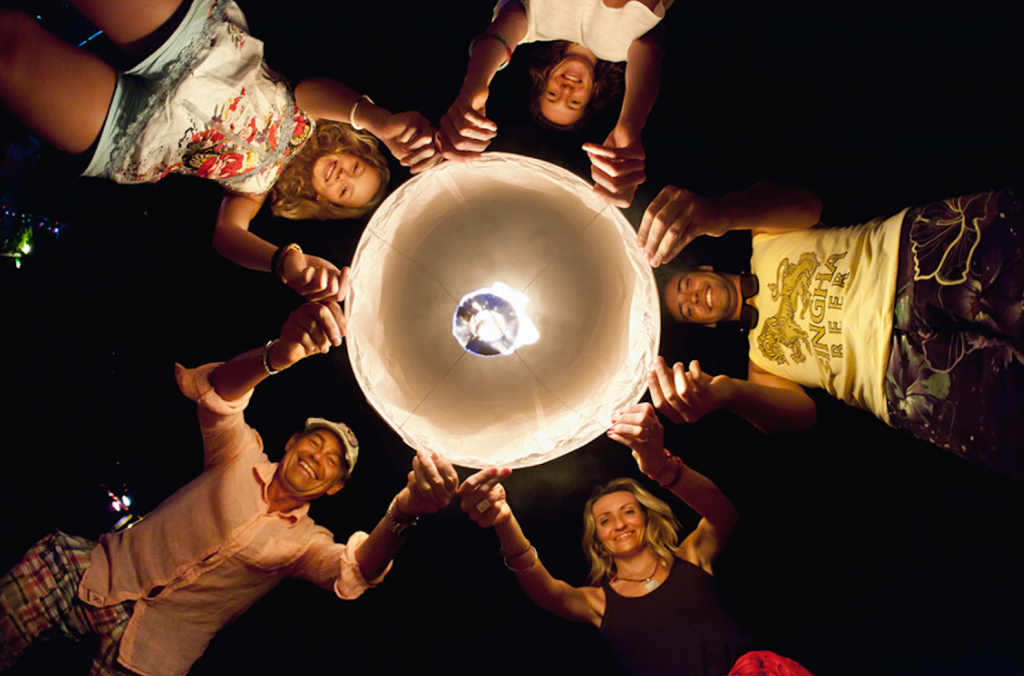Into the Light: Myanmar’s Chindwin River Cruise
The laughter of the children echoes across the rice paddy fields and off a surrounding amphitheatre of limestone cliffs, as if a pint-sized army was on the move. Their little heads eventually appear from among the tall rice reeds, nearby grazing water buffalo completely unfazed as they run to the water’s edge, stop suddenly and stare, saucer-eyed, at our ship. I’m aboard Belmond’s river cruiser, Orcaella, plying the remote and rarely visited waters of the Chindwin River in northwest Myanmar, and we’ve caught a snag.
It’s September and the rainy season is nearly over, but tropical deluges in the mountains to the north have set the Chindwin to a rushing, mustard-hued torrent dotted with debris. One sizable tree trunk has become entangled in our propeller, and the captain has no option but to tie up to a tree — just beyond a tiny cluster of thatch homes perched beside the river — while the crew leap into the water and dislodge it. Of all the encounters on our 12 day, 1600 kilometre river adventure, this epitomises the experience best; we’re able to stop beside a serene riverside village whose inhabitants have quite likely never seen westerners up close before, which is precisely what we all came here for. But it’s also the third delay of the day on a long journey fraught with logistical and cultural calamities that illustrate the difficulties of introducing new and unexplored locales, while also providing the luxuries that today’s jet-set travellers demand.
The village children and I enjoy a period of gazing at one another across a muddy river bank. Some board a tiny canoe for a closer look as their fathers work with the crew to dislodge a log that’s more than 2 metres long. With frantic waving and laughter that reverberates across the darkening landscape, the debris is unblocked and we’re on our way again, fighting against the Chindwin’s strong current, bound for the town of Homalin further north.
Luxurious and intimate, Belmond’s iconic Road to Mandalay, a beautiful German river cruiser that now calls the Irrawaddy River home, has been the first foray into Myanmar for many travellers, who, despite political instability and a nearly complete lack of infrastructure, wanted to walk among the silk looms of Mandalay or the ancient temples of Bagan, and still be able to return for cocktails on deck at sunset.
Many of the 30-odd passengers boarding the Orcaella in Mandalay five days earlier had already travelled on the Road to Mandalay. There were French and Americans, Germans (from both east and west), as well as a Belgian couple and a bevy of Australians travelling as a family. The Orcaella might be somewhat lacking from an aesthetic point of view, with its custom-designed hull, shallow draft and box-like superstructure making it resemble a refrigerator floating on its back, but it makes up for this with its intimacy — just 25 cabins spread across three decks — and its traditional interior design.
Orcaella is more modern than her sister ship, with cabins that feature full height French doors which allow the warmth of the evening into the air conditioned confines of the ship. The dining room is dressed in warm, regal tones, with Asian art adorning walls and comfortable chairs lining dining tables. On the upper level there is an elegant cocktail lounge and library, as well as an outdoor plunge pool lined by sun loungers forward, and another open air lounge and cocktail bar aft.
However, it’s the wonders of one of Asia’s most least-known countries that are the real focus of this journey. As the sun dips low behind the peaks of the Alaungdaw Kathapa National Park, home to Myanmar’s largest population of Indo-Chinese tigers, Captain Aung Nyein — a 42-year veteran of the river — slows Orcaella to a crawl and navigates the treacherous shifting sandbanks at the confluence of the Irrawaddy and the Chindwin. With the final rays of twilight we watch as Orcaella nudges gently into the swollen Irrawaddy, while cocktails are served on the upper sun deck and dinner prepared in the elegant dining room.
Thanboddhay Pagoda, which is crowded for a full moon celebration, is our first real chance to delve more deeply into the local culture and its Buddhist heritage. Gaggles of curious children follow us around the orange and cream-coloured shrine and through hallowed halls pockmarked with more than 500,000 tiny Buddha statues. There are more in the nearby fields of Bodhi Tataung, where in excess of 6000 serene sculptures, donated by the faithful, look towards a mesmerising 130 metre high gilded Buddha on a nearby hilltop.
There’s more cross cultural curiosity when we arrive with the dawn at the tiny village of Mokehtaw, walking on dykes between flooded paddy fields to the community hall in time to witness five young boys undertake their shinbyu, or novitiation ceremony. It’s a real community affair and everyone has turned out to hear the abbot speak, then watch as the boys’ heads are shaved and they’re wrapped in brilliant crimson robes. Many boys in Myanmar spend a period as novices — in the country it can be a year, in the city as short as a week — and it’s a very proud occasion for families and for the whole village. The young boys, no older than 10, scratch their now bald heads and pluck at their new robes, loving all the attention. They follow us back across the paddy fields to our ‘fast boat’, a dragonfly of a ferry that transfers guests to and from the Orcaella — which sets a more pedestrian pace in its attempt against the river current to keep schedule. Even at our glacial pace, changes to the weather are clearly apparent as we creep northwards; the mellow warmth of the plains giving way to the mists of the mountains.
The day after our logjam we’re in the lively markets of Kalewa, a trading gateway to India. It’s been raining through the night, a thick layer of mist settling over the river like whipped cream. The mud in the markets is ankle deep, but the colour and activity of the markets make up for the weather. The Burmese are among the most welcoming people in the world; all along the river we have been greeted by singing, waving children, by shy fisherman who beam as we pass, and even at this lonely outpost near the Indian border we’re greeted with betel-stained smiles and offerings of fruit and thick, hand-rolled cheroots.
On another morning we walk down water buffalo tracks to the teak village of Maukkadaw. This is where the towering teak trees that are felled in Myanmar’s thick jungle arrive at the river to be transported downstream. We pass a military patrol searching for poachers and past massive piles of logs on our way to a local school where children are dressed in immaculately white uniforms. Their faces, however, are coated with thick strokes of decorative, thanaka clay, and they crowd around us — posing for photos, then screeching with laughter when they see themselves in the LCD screen.
In Sitthaung, a tiny village of just 25 homes, we brave belting rain and walk to the local school accompanied by packs of laughing children. On the way, we climb up and down paddy dykes, venture past stilted thatch homes and around the locals’ ever-stoic water buffaloes. The Orcaella conducts charity drives along the river and on this cruise we have the humbling opportunity to introduce the first electric light bulbs and a solar panel to this tiny settlement. Beautiful children with dark, inquisitive eyes line the walls of the solitary room at the school, where local militia leaders accept the solar panel donation, holding the light bulbs up and posing with them while conveying the seriousness of the occasion through their posed expressions.
Finally in Homalin, the northern-most point of our itinerary, we watch Naga tribespeople in traditional headwear sing and sway to a timeless dance while we sip homemade rice wine from bamboo cups. More inquisitive children — now dressed in bright red, black and yellow beads, with feathers in their hair — sit at our feet. The singing has a beautiful, rhythmic quality and soon guests are up, joining the dancers. It’s a magnificent experience.
The itinerary is long, with eight afternoons of cruising north and three south, but it features plenty of activities; in the market town of Mawleik we ride Chinese made tuk-tuks into the countryside, to a colonial era mansion once owned by the Bombay Burmah Trading Company. There, we are greeted with glasses of champagne while the ship’s chef serves barbequed prawns and betel nut salad. The next day we ride elephants at a working elephant camp and watch as they bathe in a nearby river.
There is a minor insurrection on the second to last day, when it’s announced that due to time constraints we’ll only be spending 3 hours in Bagan, a true highlight of Myanmar. The ship has struggled to keep up with the current; the logistics of boarding the fast ferry and the visits to the many villages, monasteries and markets en route has bitten into our time at the ancient temple complex. Soon, the ship’s little lobby is packed with angry passengers. Fortunately, hotel manager Win Min quickly allays everyone’s fears, tweaks the itinerary and mutiny is averted.
We spend a glorious last day exploring the ancient temples of Bagan, from regal Thatbyinnyu and Dhammayangyi to the gold-dipped Shwezigon Pagoda. We also clamber inside a few of the ancient, crumbling, terracotta-hued stupas and visit lacquer workshops before returning to the ship for sunset cocktails. Balancing cruising, local exploration and creature comforts, Belmond’s Orcaella and Road to Mandalay are truly charting a new route through one of Asia’s most remote and fascinating cultural and natural landscapes.





